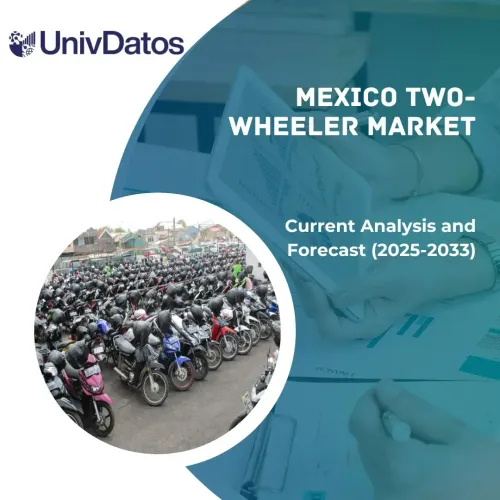- Home
- About Us
- Industry
- Services
- Reading
- Contact Us
Reverse Logistics Market: Current Analysis and Forecast (2022-2028)
Emphasis on Return Type (Returns, Recalls, Commercial and B2B Returns, End-Of-Use Returns, and End-Of-Life Returns); Services (Transportation, Warehousing, Reselling, Replacement Management, and Refund Management Authorization); Application (E-Commerce, Automotive, Pharmaceutical, Consumer Electronics, and Others)); and Region/Country

Global Reverse logistics Market is expected to grow at a significant rate of around 5% during the forecast period. Reverse logistics is an important part of supply chains in many industries, like the automotive, electronics, and pharmaceuticals industries. Reverse logistics systems have been developed and implemented worldwide to assess the value of returned or damaged goods. Reverse logistics includes return management, recycling, and environmental compliance. Moreover, the number of returns and requests for replacement items has increased as a result of the proliferation of e-commerce businesses worldwide. In order to strengthen the market, significant market players are working to implement cutting-edge technology.
SCHENKER AG, Deutsche Post AG, FedEx, Kintetsu World Express Inc, United Parcel Service Inc, Delhivery Limited, Yusen Logistics Co Ltd, RLG Systems AG, Core Logistic Private Limited and Safexpress Pvt Ltd are some of the key players in the market. Several M&As along with partnerships have been undertaken by these players to facilitate customers with hi-tech and innovative products/technologies.
Insights Presented in the Report
“Amongst Return type, return category to witness robust CAGR during the forecast period”
Based on return type, the market is segmented into recalls, repairable returns, commercial and B2B returns, end-of-use returns, and end-of-life returns. The repairable return is anticipated to grow with high CAGR during the forecast period. The surge in domestic and international interconnectivity has allowed for the global expansion of business. Apart from this, the government has also undertaken several initiatives to repair or replace defective automobiles. As a result of customer-friendly government policies manufacturers are liable for defective products, and consumers are entitled to a replacement, thereby driving the reverse logistics market.
“Amongst Services, the transportation to hold a significant share in the market in 2020”
Based on services, the market is categorized into transportation, warehousing, reselling, replacement management, and refund management authorization. Among these, the transportation to hold a significant share in the market in 2020. This is mainly due to the things like the growth of the e-commerce industry, which has increased the demand for consumer goods that need to be shipped to their customers. Moreover, in reverse logistics, a transportation facility is crucial because it ensures the safe delivery of goods at a particular time.
“Amongst end-user, the e-commerce to hold a significant share in the market in 2020”
Based on end-user, the reverse logistics market has been classified into e-commerce, automotive, pharmaceutical, consumer electronics, and others. The e-commerce is to witness higher adoption during the forecast period. This is mainly due to the rising demand from consumers for high-quality consumer electronics, auto parts, and pharmaceutical product deliveries over rapidly expanding online platforms like e-commerce, quality assurance.
“APAC to hold a significant share in the market”
For a better understanding of the market adoption of the Reverse logistics industry, the market is analyzed based on its worldwide presence in the countries such as North America (U.S., Canada, Rest of North America), Europe (Germany, U.K., France, Spain, Italy, Rest of Europe), Asia-Pacific (China, Japan, India, Rest of Asia-Pacific), Rest of World. APAC is anticipated to grow at a substantial CAGR during the forecast period. Some of the main factors that are driving the growth of the market are things like the increased use of e-commerce services in countries like India and China and the increased number of product recalls in the automotive industry due to strict government rules about the quality of the product. During the forecast period, steady growth is anticipated in North America. The use of blockchain has made it easier to track the product’s lifecycle and made it more transparent. As a result, the market’s expansion is anticipated to be fueled by the end-user of cutting-edge technologies like blockchains.
Reasons to buy this report:
- The study includes market sizing and forecasting analysis validated by authenticated key industry experts.
- The report presents a quick review of overall industry performance at one glance.
- The report covers an in-depth analysis of prominent industry peers with a primary focus on key business financials, product portfolio, expansion strategies, and recent developments.
- Detailed examination of drivers, restraints, key trends, and opportunities prevailing in the industry.
- The study comprehensively covers the market across different segments.
- Deep dive regional level analysis of the industry.
Customization Options:
The global reverse logistics market can further be customized as per the requirement or any other market segment. Besides this, UMI understands that you may have your own business needs, hence feel free to connect with us to get a report that completely suits your requirements.
Table of Content
Research Methodology for the Reverse logistics Market Analysis (2022-2028)
Analyzing the historical market, estimating the current market, and forecasting the future market of the global reverse logistics market were the three major steps undertaken to create and analyze the adoption of reverse logisticss in major regions globally. Exhaustive secondary research was conducted to collect the historical market numbers and estimate the current market size. Secondly, to validate these insights, numerous findings and assumptions were taken into consideration. Moreover, exhaustive primary interviews were also conducted, with industry experts across the value chain of the global reverse logistics market. Post assumption and validation of market numbers through primary interviews, we employed a top-down/bottom-up approach to forecasting the complete market size. Thereafter, market breakdown and data triangulation methods were adopted to estimate and analyze the market size of segments and sub-segments of the industry pertains to. Detailed methodology is explained below:
Analysis of Historical Market Size
Step 1: In-Depth Study of Secondary Sources:
Detail secondary study was conducted to obtain the historical market size of the reverse logistics market through company internal sources such as annual reports & financial statements, performance presentations, press releases, etc., and external sources including journals, news & articles, government publications, competitor publications, sector reports, third-party database, and other credible publications.
Step 2: Market Segmentation:
After obtaining the historical market size of the reverse logistics market, we conducted a detailed secondary analysis to gather historical market insights and share for different segments & sub-segments for major regions. Major segments are included in the report as return type, services, and end-user. Further country-level analyses were conducted to evaluate the overall adoption of testing models in that region.
Step 3: Factor Analysis:
After acquiring the historical market size of different segments and sub-segments, we conducted a detailed factor analysis to estimate the current market size of the reverse logistics market. Further, we conducted factor analysis using dependent and independent variables such as various return type, services, and end-user of reverse logistics. A thorough analysis was conducted for demand and supply-side scenarios considering top partnerships, mergers and acquisitions, business expansion, and product launches in the reverse logistics market sector across the globe.
Current Market Size Estimate & Forecast
Current Market Sizing: Based on actionable insights from the above 3 steps, we arrived at the current market size, key players in the global reverse logistics market, and market shares of the segments. All the required percentage shares split, and market breakdowns were determined using the above-mentioned secondary approach and were verified through primary interviews.
Estimation & Forecasting: For market estimation and forecast, weights were assigned to different factors including drivers & trends, restraints, and opportunities available for the stakeholders. After analyzing these factors, relevant forecasting techniques i.e., the top-down/bottom-up approach were applied to arrive at the market forecast for 2028 for different segments and sub-segments across the major markets globally. The research methodology adopted to estimate the market size encompasses:
- The industry’s market size, in terms of revenue (USD) and the adoption rate of the reverse logistics market across the major markets domestically
- All percentage shares, splits, and breakdowns of market segments and sub-segments
- Key players in the global reverse logistics market in terms of products offered. Also, the growth strategies adopted by these players to compete in the fast-growing market
Market Size and Share Validation
Primary Research: In-depth interviews were conducted with the Key Opinion Leaders (KOLs) including Top Level Executives (CXO/VPs, Sales Head, Marketing Head, Operational Head, Regional Head, Country Head, etc.) across major regions. Primary research findings were then summarized, and statistical analysis was performed to prove the stated hypothesis. Inputs from primary research were consolidated with secondary findings, hence turning information into actionable insights.
Split of Primary Participants in Different Regions

Market Engineering
The data triangulation technique was employed to complete the overall market estimation and to arrive at precise statistical numbers for each segment and sub-segment of the global reverse logistics market. Data was split into several segments & sub-segments post studying various parameters and trends in the areas of return type, services, and end-user in the global reverse logistics market.
The main objective of the Global Reverse logistics Market Study
The current & future market trends of the global reverse logistics market were pinpointed in the study. Investors can gain strategic insights to base their discretion for investments on the qualitative and quantitative analysis performed in the study. Current and future market trends determined the overall attractiveness of the market at a regional level, providing a platform for the industrial participant to exploit the untapped market to benefit from a first-mover advantage. Other quantitative goals of the studies include:
- Analyze the current and forecast market size of the reverse logistics market in terms of value (USD). Also, analyze the current and forecast market size of different segments and sub-segments
- Segments in the study include areas of return type, services, and end-user.
- Define and analysis of the regulatory framework for the reverse logistics
- Analyze the value chain involved with the presence of various intermediaries, along with analyzing customer and competitor behaviors of the industry.
- Analyze the current and forecast market size of the reverse logistics market for the major region.
- Major countries of regions studied in the report include Asia Pacific, Europe, North America, and the Rest of the World.
- Company profiles of the reverse logistics market and the growth strategies adopted by the market players to sustain in the fast-growing market
- Deep dive regional level analysis of the industry
Related Reports
Customers who bought this item also bought










